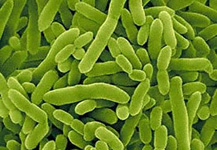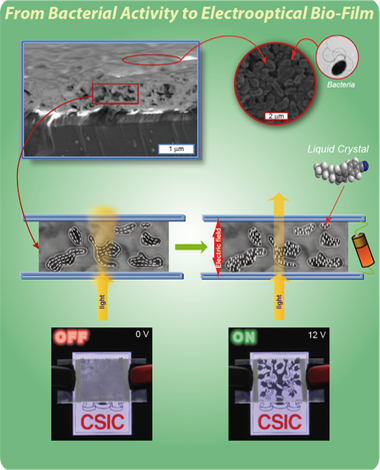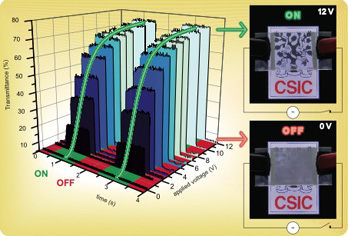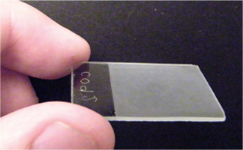Electrooptical Devices Based on Biofilms Structures
In cooperation with the National Centre of Biotechnology (CSIC),a new electrooptical device was developed based in the same principles of the GDLC’s in which the host matrix for the liquid crystal (LC) is made by bacterial activity (biofilm) with a specific structure in terms of macroporosity and refractive index of the matrix.

Pseudomonas Putida
The specific tridimensional architecture and optical properties of a biofilm created by the bacterium Pseudomonas putida mt-2, complies with these requirements and was therefore used to build-up the electrooptical device (Figure).

The biofilm electrooptical device showed an opaque state with a light transmittance of about 6 %. The application of low effective voltages (<10V) resulted in a fast transition into a very clear transparent state (T > 75%) in the range of miliseconds (Figure).

This pioneering results account for the first usage of bacteria created biofilms for the preparation of optical devices, and opens a new tendency in the multidisciplinary research towards exploiting natural structures as potential hosts for advanced devices.
http://www.cnb.csic.es//~meml/meml/Welcome.html
E. Castellón, M. Chavarría, V. de Lorenzo, M. Zayat and D. Levy, Adv. Mater. 2010, 22, 4846.
E. Castellón Elizondo, M. Chavarría Vargas, V. de Lorenzo, M. D. Zayat Souss, D. S. Levy Cohén, An electro-optical device from a Biofilm Structure created by Bacterial Activity, Patent: P201030295.

